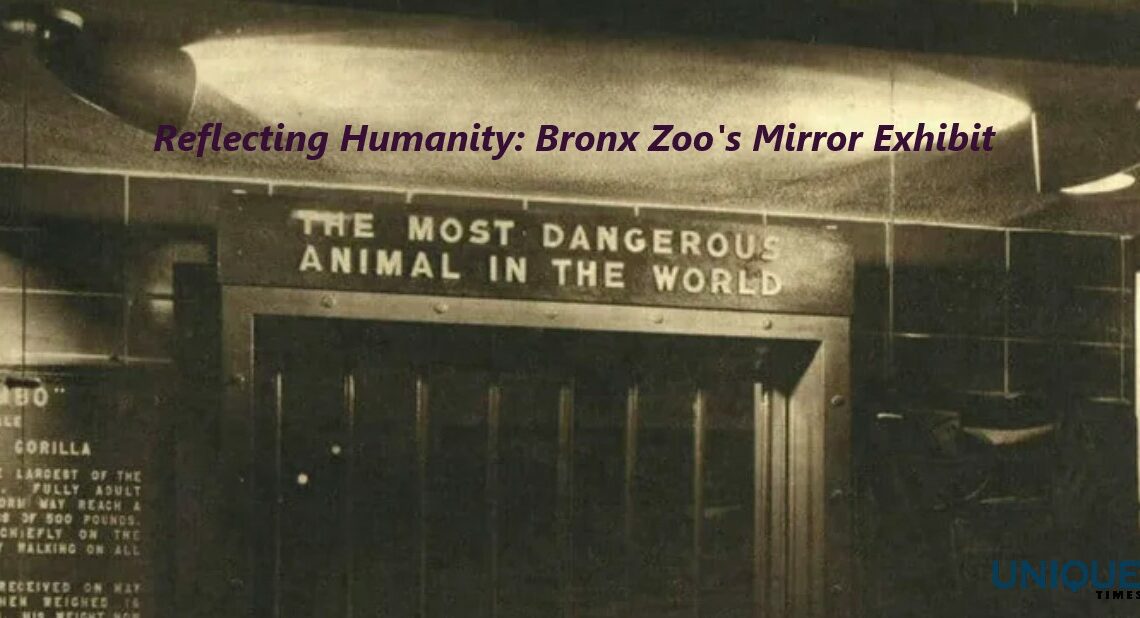The Bronx Zoo’s Provocative Exhibit: Reflecting on Humanity and “The Most Dangerous Animal in the World

In 1963, the Bronx Zoo showcased an unconventional and thought-provoking exhibit named “The Most Dangerous Animal in the World.” Instead of featuring a ferocious creature or a venomous predator, this exhibit simply consisted of a mirror. The profound symbolism behind this display aimed to challenge visitors’ perceptions of what truly makes a species dangerous. In this blog, we delve into the significance of this unique exhibit and explore the deeper reflections it brings about human nature and our responsibility towards the world we inhabit.
The Power of Self-Reflection: “The Most Dangerous Animal in the World” relied on the power of self-reflection to make a profound statement. By gazing into the mirror, visitors were forced to confront themselves and recognize that humans are capable of both incredible compassion and unfathomable cruelty. The mirror became a powerful tool for introspection, prompting visitors to question their actions and consider their role in shaping the world around them.
The Human Impact on Nature: Beyond the mirror’s reflection of our individual traits, the exhibit sought to underscore humanity’s impact on the natural world. Humans have been the driving force behind many environmental issues, including deforestation, pollution, and climate change. By highlighting our potential for destruction, the exhibit encouraged visitors to reevaluate their relationship with nature and consider more sustainable practices.
The Duality of Human Nature: “The Most Dangerous Animal in the World” effectively portrayed the duality of human nature. On one hand, humans possess great intelligence and compassion, leading to remarkable achievements and a capacity for empathy. On the other hand, our species has demonstrated a propensity for violence, greed, and exploitation of resources. By acknowledging this dichotomy, the exhibit urged visitors to be more conscious of their actions and strive towards positive change.
The Ethical Implications: The provocative nature of the exhibit raises ethical questions regarding how we interact with animals and the environment. Humans have historically treated animals as mere resources for consumption and entertainment. “The Most Dangerous Animal in the World” confronted us with the ethical ramifications of such behaviors, pushing us to reassess our responsibility towards other species and the preservation of our planet’s biodiversity.
Lessons for the Future: Decades after its creation, the message of the “The Most Dangerous Animal in the World” remains pertinent today. As our world faces escalating environmental challenges and social injustices, the exhibit’s lessons serve as a timely reminder. It encourages us to acknowledge our collective responsibility and take action to protect the delicate balance of our ecosystem.
Conclusion: “The Most Dangerous Animal in the World” exhibit at the Bronx Zoo was a brilliant testament to the power of art and reflection. Its unconventional approach confronted visitors with the truth about human nature and our significant impact on the natural world. Even years later, the lessons from this thought-provoking exhibit resonate strongly with the urgent need to embrace sustainability, compassion, and empathy. As we move forward, let us carry these lessons in our hearts and strive to become better stewards of our planet and all the living beings we share it with.
Picture Courtesy: Google/images are subject to copyright








